
5 Ways to Improve Production Efficiency
Viki Dongare |
31 Mar 2024 |
06:39 AM
- Understanding Production Efficiency
- Importance of Improving Production Efficiency
- What is Production Efficiency?
- How to Increase Production Efficiency
- Standardize Your Production Processes
- Implement Proactive Equipment Maintenance
- Invest in Employee Training and Engagement
- Identify and Reduce Waste
- Conclusion
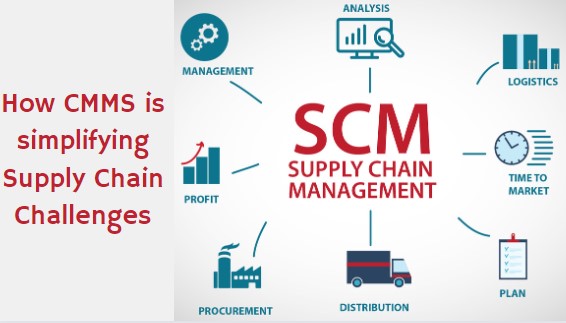
How CMMS Inventory Management Software simplifies Supply Chain Challenges
Viki Dongare 28 Jan 2024 | 16:14 PMUnlocking precision in supply chain management, Computerized Maintenance Management Systems (CMMS) revolutionize inventory control, operational efficiency, and maintenance strategies for businesses, fostering resilience in a dynamic marketplace...
Understanding Production Efficiency
In today's fast-paced manufacturing landscape, achieving optimal production efficiency is paramount for businesses aiming to thrive in competitive markets. Production efficiency, often regarded as the cornerstone of successful manufacturing operations, encompasses the ability to maximize output while minimizing resources, time, and costs. It's the driving force behind meeting customer demands, maintaining profitability, and sustaining growth.
Importance of Improving Production Efficiency
Improving production efficiency involves a strategic focus on refining various aspects of the production process, from streamlining workflows to enhancing equipment performance. By leveraging lean manufacturing principles, companies can identify and eliminate inefficiencies, ultimately leading to smoother operations and higher productivity. Moreover, investing in employee training and engagement plays a pivotal role in fostering a culture of continuous improvement and innovation.
What is Production Efficiency?
Defining Production Efficiency
Production efficiency refers to the ability of a manufacturing plant to produce maximum output with the least amount of input. It encompasses various factors such as time, resources, and costs, all of which contribute to the overall effectiveness of the production process.
Key Metrics and Indicators
Key metrics used to measure planned production time efficiency include cycle time, throughput, yield, and equipment utilization. These metrics provide insights into the production line's performance, enabling companies to identify areas for improvement and optimize operations.
Significance in Manufacturing
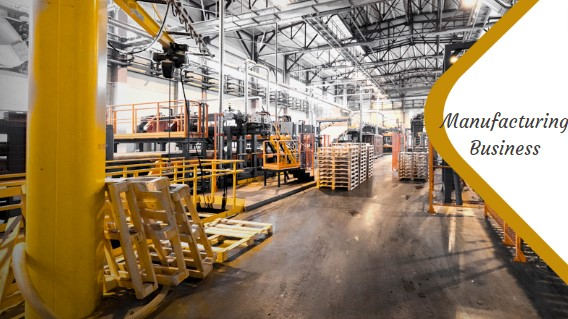
Production efficiency is crucial for manufacturing companies as it directly impacts profitability, customer satisfaction, and competitiveness in the market. By enhancing production efficiency, businesses can reduce manufacturing costs, improve product quality, and meet customer demand more effectively. Additionally, efficient production processes contribute to sustainability efforts by minimizing waste and environmental impact.
Production efficiency lies at the heart of successful manufacturing operations, driving continuous improvement and innovation. By understanding its importance, implementing effective strategies, and monitoring key metrics, companies can unlock their full potential and achieve sustainable growth in today's dynamic business environment.
How to Increase Production Efficiency
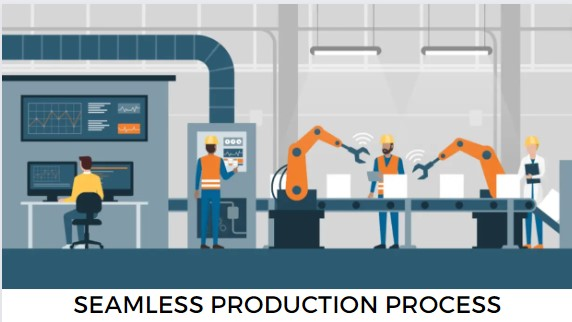
Overview of Steps
Increasing production efficiency involves a systematic approach to optimizing various aspects of manufacturing operations. By implementing strategic measures, businesses can enhance productivity, minimize waste, and improve overall performance. Let's explore the key steps in this process:
Step 1: Improve Your Business Processes
-
Analyzing Current Processes - The first step to improve production efficiency is to conduct a comprehensive analysis of existing business processes. This involves identifying inefficiencies, bottlenecks, and areas for improvement. By examining each stage of the production process, companies can pinpoint factors hindering efficiency and develop targeted solutions.
-
Implementing Lean Principles - One effective approach to improve production efficiency is by adopting lean manufacturing principles. This methodology focuses on eliminating waste, optimizing workflow, and maximizing value for the customer. By streamlining processes, reducing lead times, and minimizing inventory, companies can achieve higher levels of efficiency and competitiveness.
-
Incorporating Continuous Improvement - Continuous improvement is essential for sustaining and enhancing production efficiency over time. By fostering a culture of innovation and learning, organizations can encourage employees to identify opportunities for improvement and implement solutions proactively. This iterative process allows companies to adapt to changing market demands and maintain a competitive edge.
Step 2: Evaluate Your Production Line
-
Assessing Production Line Performance - Evaluating the performance of production lines is critical for identifying areas of inefficiency and implementing targeted improvements. This involves monitoring key performance indicators such as throughput, cycle time, and defect rates. By analyzing data and identifying trends, companies can gain valuable insights into the factors impacting production efficiency.
-
Identifying Inefficiencies - During the evaluation process, it's essential to identify inefficiencies and root causes that may be affecting production line performance. Common issues include equipment downtime, production bottlenecks, and suboptimal workflow layouts. By conducting thorough assessments and root cause analyses, companies can develop tailored strategies to address these challenges and improve overall efficiency.
Step 3: Update Technology
-
Role of Modern Technology - Modern technology, including advanced machinery, software solutions, and data analytics tools, revolutionizes how manufacturing processes are carried out. Automation, robotics, and Internet of Things (IoT) devices enable seamless integration and communication across production lines, optimizing workflow and reducing manual intervention. Additionally, innovative software platforms empower companies to analyze real-time data, identify inefficiencies, and make data-driven decisions for continuous improvement.
-
Integration of Automation - Automation plays a crucial role in improving production efficiency by reducing human error, enhancing precision, and increasing throughput. By automating repetitive tasks and routine operations, companies can free up valuable human resources for more strategic activities. Automated systems also contribute to reducing equipment downtime, minimizing production delays, and ensuring consistent product quality. Integration of automation across production lines enables smoother operations, higher output, and improved overall efficiency.

-
Utilizing Industry Standards - Adhering to industry standards and best practices is essential for maximizing the benefits of updated technology. Compliance with standards such as ISO 9001 for quality management and ISO 14001 for environmental management ensures that manufacturing processes meet regulatory requirements and customer expectations. By aligning with industry standards, companies can benchmark their performance, identify areas for improvement, and strive for excellence in production efficiency.
Step 4: Identify Production Bottlenecks
-
Recognizing Bottleneck Causes - Production bottlenecks are obstacles that impede the smooth flow of production and limit actual output. Identifying the root causes of bottlenecks is crucial for overcoming these challenges and increase efficiency. Common bottleneck causes include equipment breakdowns, material shortages, inefficient process layouts, and full capacity constraints. By conducting thorough assessments and root cause analyses, companies can pinpoint bottleneck causes and develop targeted strategies for resolution.
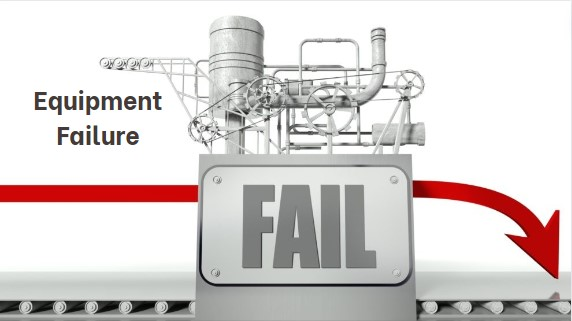
-
Strategies for Overcoming Bottlenecks - Once bottleneck causes are identified, companies can implement various strategies to overcome them and optimize production flow. These may include investing in additional equipment or resources, redesigning process layouts for better flow, implementing Just-in-Time (JIT) inventory management to prevent material shortages, and cross-training employees to handle multiple tasks effectively. By addressing bottleneck causes proactively and implementing appropriate solutions, companies can enhance production efficiency and minimize disruptions in the manufacturing process.
Step 5: Find and Eliminate Wastefulness
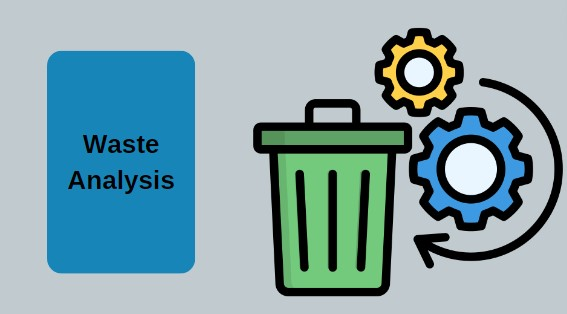
-
Conducting Waste Analysis - The first step in addressing wastefulness is conducting a comprehensive waste analysis. This involves closely examining every aspect of production processes to identify areas where waste occurs. Common types of waste in manufacturing include overproduction, waiting time, transportation inefficiencies, excessive motion, defects, and underutilized talent. By analyzing data, observing current workflow, and engaging employees, companies can gain valuable insights into the root causes of wastefulness and prioritize areas for improvement.
-
Implementing Waste Reduction Strategies - Once wastefulness is identified, companies can implement targeted strategies to reduce or eliminate it. Lean manufacturing principles provide a framework for systematically identifying and addressing different types of waste. Strategies may include implementing Just-in-Time (JIT) production to minimize inventory levels, optimizing equipment layouts to reduce unnecessary motion, and implementing quality control measures to prevent defects. Additionally, empowering employees to suggest and implement waste reduction initiatives fosters a culture of continuous improvement and innovation.
Standardize Your Production Processes
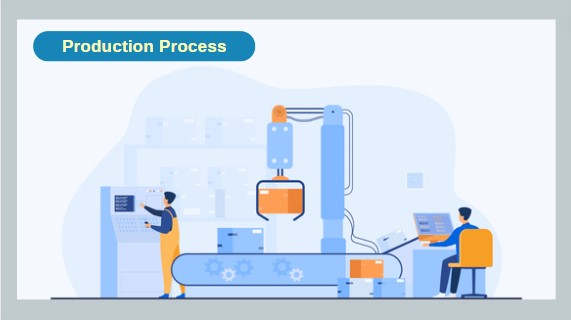
Standardizing production processes is a key strategy for improving efficiency and consistency in manufacturing operations. By establishing uniform procedures and protocols, companies can streamline workflows, reduce errors, and enhance overall productivity. Let's explore the importance of standardization and the implementation of standard operating procedures (SOPs):
Importance of Standardization
Standardization ensures that tasks are performed consistently and efficiently across all levels of the organization. It helps minimize variations in actual output, reduce rework, and improve product quality. Standardized processes also facilitate training and onboarding of new employees, as well as enable easier troubleshooting and problem-solving. Additionally, standardization fosters a culture of continuous improvement by providing a baseline for measuring performance and identifying areas for enhancement.
Implementing Standard Operating Procedures

Standard operating procedures (SOPs) are detailed instructions that outline the steps to be followed for performing specific tasks or processes. They provide clear guidelines and expectations for employees, ensuring that work is conducted in a systematic and standardized manner.
SOPs cover various aspects of production, including equipment operation, quality control, inventory management, and safety procedures. By documenting and disseminating SOPs effectively, companies can ensure consistency, minimize errors, and improve efficiency throughout the manufacturing process.
Benefits and Challenges
The benefits of standardizing production processes are numerous, including improved efficiency, enhanced product quality, and reduced costs. Standardization also facilitates regulatory compliance and enables easier scaling of operations as businesses grow.
However, implementing and maintaining standardized processes may pose challenges, such as resistance to change, the need for ongoing training and communication, and the risk of complacency. Overcoming these challenges requires commitment from leadership, active involvement from employees, and a continuous focus on optimization and refinement.
Standardizing production processes is essential for achieving consistency, efficiency, and quality in manufacturing operations. By implementing standard operating procedures and embracing standardization principles, companies can enhance productivity, reduce costs, and position themselves for long-term success in today's competitive business environment.
Implement Proactive Equipment Maintenance
Understanding Preventive Maintenance
Preventive maintenance is a proactive approach to equipment upkeep aimed at preventing breakdowns and optimizing performance. It involves scheduling regular inspections, servicing, and repairs to ensure that machinery operates efficiently and reliably. By addressing potential issues before they escalate, preventative maintenance helps minimize downtime, reduce repair costs, and extend the lifespan of equipment.
Setting Up Maintenance Schedules
Establishing maintenance schedules is essential for implementing a preventive maintenance program effectively. Maintenance tasks are scheduled based on equipment usage, manufacturer recommendations, and historical performance data. Regular inspections, lubrication, calibration, and replacement of worn parts are some common maintenance activities included in schedules. By adhering to maintenance schedules, companies can maintain equipment in optimal condition and prevent unexpected failures.
Leveraging Maintenance Resources
Effective maintenance requires access to skilled personnel, tools, and resources. Maintenance teams play a crucial role in executing maintenance tasks efficiently and effectively. Investing in training and development programs equips maintenance personnel with the knowledge and skills needed to perform their duties proficiently. Additionally, providing access to modern tools, diagnostic equipment, and technology enables maintenance teams to work more efficiently and accurately.
Invest in Employee Training and Engagement
Importance of Skilled Workforce - A skilled workforce is essential for maintaining productive efficiency and ensuring the success of manufacturing businesses. Well-trained employees possess the expertise and competency to operate machinery safely, troubleshoot issues effectively, and contribute to continuous improvement initiatives. Investing in employee training not only enhances individual performance but also strengthens the overall capabilities of the organization.
Training Programs for Efficiency - Training programs focused on efficiency equip employees with the knowledge and skills needed to optimize production processes and reduce waste. These programs cover a range of topics, including lean manufacturing principles, process improvement methodologies, and equipment operation techniques. By providing employees with the tools and training they need to succeed, companies can improve efficiency, enhance productivity, and drive operational excellence.
Employee Engagement Strategies - Engaging employees in the improvement process fosters a culture of ownership, collaboration, and innovation. Encouraging feedback, recognizing contributions, and involving employees in decision-making empower them to take ownership of their work and contribute to positive change. Employee engagement strategies such as regular communication, team-building activities, and performance recognition initiatives enhance morale, motivation, and productivity in manufacturing facilities.
Identify and Reduce Waste
Types of Waste in Manufacturing
In manufacturing, waste refers to any activity, process, or resource that does not add value to the final product or service. Common types of waste, as identified by lean manufacturing principles, include:
-
Overproduction: Producing more than what is demanded by customers.
-
Waiting: Idle time spent waiting for materials, equipment, or instructions.
-
Transportation: Unnecessary movement of materials or products between workstations.
-
Overprocessing: Performing unnecessary or excessive steps in the production process.
-
Inventory: Excess raw materials, work-in-progress, or finished goods that tie up capital and space.
-
Motion: Unnecessary movement of people or equipment that adds no value.
-
Defects: Errors or mistakes that require rework or scrap.
-
Underutilized talent: Not leveraging the skills, knowledge, and creativity of employees to their full potential.
Techniques for Waste Identification
Identifying and eliminating waste requires a systematic approach. Techniques such as value stream mapping, Gemba walks, and 5S audits help organizations visualize workflow, identify inefficiencies, and uncover opportunities for improvement. Additionally, conducting root cause analyses, gathering feedback from employees, and analyzing production data can provide insights into the underlying causes of waste.
Implementing Waste Reduction Initiatives
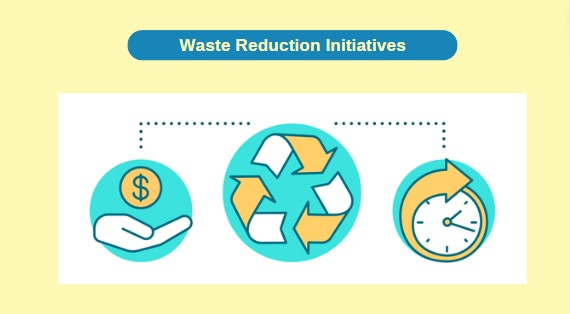
Once waste is identified, companies can implement targeted initiatives to reduce or eliminate it. This may involve streamlining processes, optimizing layouts, implementing Just-in-Time (JIT) production, and implementing quality control measures. By empowering employees to suggest and implement waste reduction initiatives, companies can foster a culture of continuous improvement and innovation.
Identifying and reducing waste is essential for improving manufacturing efficiency and profitability. By understanding the types of waste, employing effective waste identification techniques, and implementing waste reduction initiatives, companies can optimize processes, minimize costs, and enhance overall productivity.
Conclusion

Enhancing production efficiency is vital for the success and sustainability of manufacturing businesses. By implementing the strategies outlined in this guide, including improving business processes, evaluating production lines, updating new technology, identifying bottlenecks, standardizing processes, conducting proactive maintenance, investing in employee training, and reducing waste, companies can streamline operations, minimize production costs, and maximize productivity.
Through proactive measures such as preventive maintenance and continuous improvement initiatives, businesses can mitigate risks associated with equipment downtime, ensure optimal utilization of resources, and maintain high levels of productive efficiency. Furthermore, by fostering a culture of innovation, collaboration, and employee engagement, organizations can tap into the full potential of their workforce and drive meaningful improvements in efficiency and performance.

As manufacturing continues to evolve, embracing new technologies, adapting to changing market dynamics, and prioritizing efficiency will be essential for staying competitive. By continuously striving for excellence and seeking opportunities for improvement, manufacturing businesses can position themselves for long-term success and achieve their goals in today's dynamic business environment.